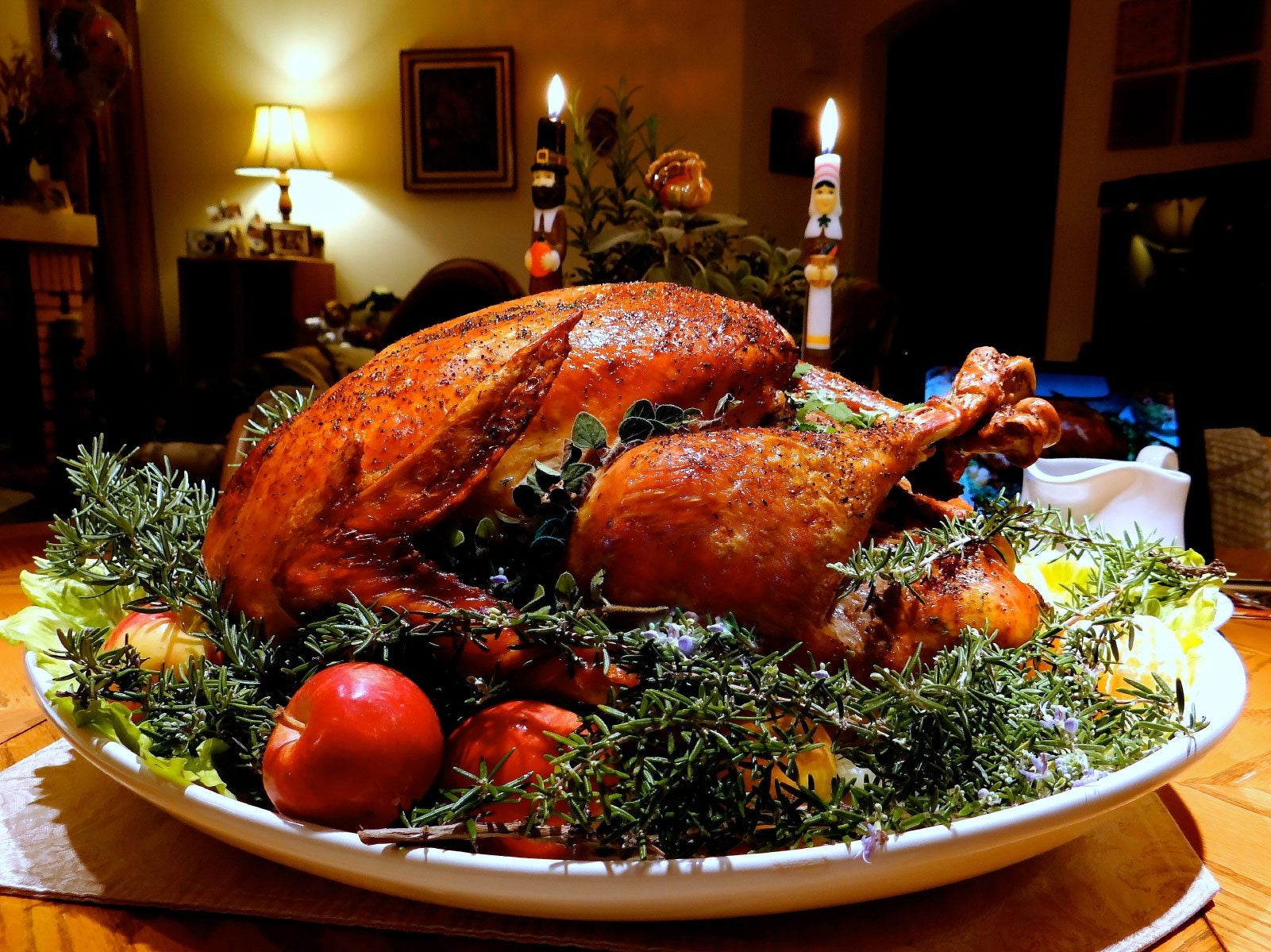
Yum. The smell of the Thanksgiving holiday! Just thinking about it conjures up aromas of sage-scented turkey roasting and pumpkin pie spice with cinnamon and nutmeg. While most Americans incorporate some family heirloom recipe into the Thanksgiving dinner, most of us have some commonality with regards to the type of Thanksgiving herbs and spices we use on this celebratory day; anytime, anywhere, the sudden aroma of which may take us back to a special Thanksgiving Day in our lives. A wonderful and simple idea for the holiday is growing your own herbs for Thanksgiving dinner. If you have a garden plot, of course, the herbs may be planted there. An alternate idea is using potted herbs for your holiday dishes. Not only can many common Thanksgiving herbs be grown indoors in containers, but doing so allows them to be grown and accessed for year round cooking. Additionally, common Thanksgiving herbs grown in pots make lovely centerpieces for the holiday table or buffet.
Growing Herbs for Thanksgiving
If you're old enough to remember a classic, the Scarborough Fair tune sung by Simon and Garfunkel will give you a clue about growing herbs for Thanksgiving. “Parsley, sage, rosemary, and thyme…” You may wish to include bay, chives, marjoram, oregano, or even cilantro depending upon which part of the country you reside and what local cuisines inspire you. However, the first four are among the most often used Thanksgiving herbs and spices whose aroma can immediately fling you into a reverie. Bay laurel, chives, marjoram, oregano, rosemary, sage, and thyme are all sun worshipers that prefer well-draining soil and can survive on relatively small amounts of water. That said, potted herbs will require more water than those planted in the garden and should be place in a sunroom or other full sun exposure.
- Bay will eventually grow into a large tree but does well for a time in a container.
- Chives tend to spread, but again if constantly harvesting the herb, will do well potted and can then be moved to the garden in the spring.
- Marjoram and oregano are members of the same family and will begin to taste much the same if grown in the same container, so separate these herbs. Both of these are vigorous spreaders and should be relocated to the garden eventually to allow them to flourish.
- Rosemary makes a stunning topiary and can do double duty both as a decorative item and a useful culinary specimen. Again, at some point, you will probably want to relegate the herb to the garden since it will eventually become more of a bush. Rosemary is a common Thanksgiving herb used to flavor potatoes or stuffed into the cavity of your turkey.
- Sage will do well with rosemary and comes in many varieties including variegated. When using potted herbs for holiday dishes, sage is a must have for Thanksgiving dinner - sage stuffing anyone?
- Thyme is another popular Thanksgiving herb, which again, has a tendency to spread. There is quite a variety of thyme to grow from those with creeping habitats to more upright types.
How to Grow Thanksgiving Garden Herbs in Containers
Container grown herbs not only require more water than those in the garden, but often more fertilizer. The amount of water that you are using flushes all the nutrients out of the soil and therefore, needs to be replenished more often, about every four weeks or so. Plant your container herbs in well-draining potting medium and place them in the sunniest window possible. They may still need supplemental light due to the shorter dark winter days. Any fluorescent bulb can achieve additional lighting for the herbs and the total time (between sunlight and false light) should be ten hours. Place the plants 8 to 10 inches (20-24 cm.) from this alternate light source. Use your herbs! Harvesting is simple and not only keeps you with a constant supply of fresh herbs, but stimulates plant growth resulting in a more vigorous and bushy plant. Remove the flowers from the herbs lest the plant thinks it's all over and become straggly or die back. When using potted herbs for holiday dishes, the rule of thumb is three to one, fresh to dry. For example, if the recipe calls for 1 teaspoon (5 ml.) of dried thyme, use 3 teaspoons (15 ml.) of fresh. Add most fresh herbs at the END of cooking time to preserve their flavor (and color). Some of the heartier types like thyme, rosemary, and sage can be added during the last 20 minutes of cooking or even longer, as when stuffing poultry.
Sign up for the Gardening Know How newsletter today and receive a free copy of our e-book "How to Grow Delicious Tomatoes".

Amy Grant has been gardening for 30 years and writing for 15. A professional chef and caterer, Amy's area of expertise is culinary gardening.
